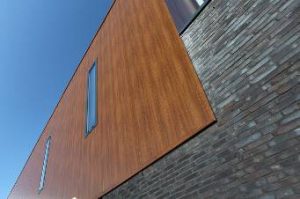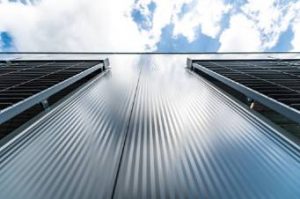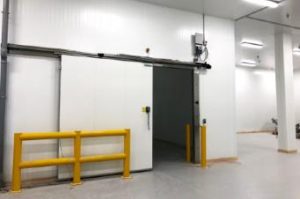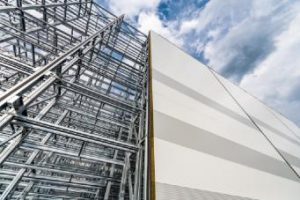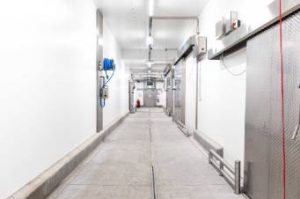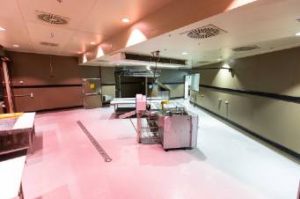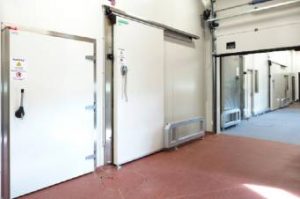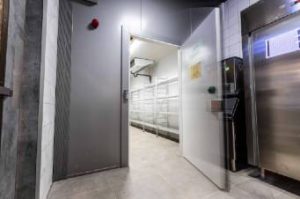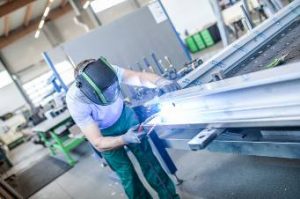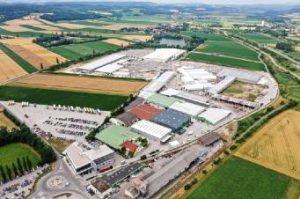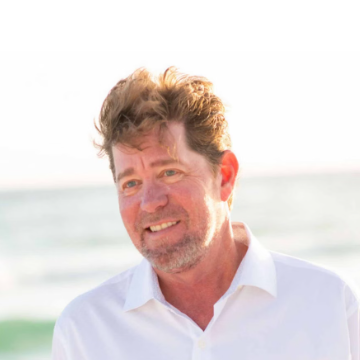FAQs
See our list for frequently asked questions (FAQ) below. If you don't find an answer to your question please reach out directly to us and our support team will be happy to answer your question.
BRUCHA wall panels can be installed vertically, horizontally, or even diagonally with the proper panel supports and detailing.
Panels are sealed at sidejoints and endjoints using factory applied gaskets with field installed butyl sealants.
PIR panels are lightweight (≈ 3 pounds per square foot) and provide the highest R-value of commonly used insulation systems at over 7.2 per inch. PIR cores, though combustible, are acceptable for use in both combustible and non-combustible construction when used in accordance with Chapter 26 Plastic of the International Building Code (IBC).
Mineral fiber panels are heavier (≈ 5 – 10 pounds per square foot), have an R-value of approximately 4 per inch and are primarily use for non-combustible or rated wall assemblies (one and two hours).
Each system provides unique advantages. Polyester (1 mil ≈ 25 µm) is the least expensive paint system and is generally chosen for interior applications. PVDF (1 mil ≈ 25 µm) is the most common choice for exterior finishes due to superior fade resistance and durability. PUR-PA (2 mils ≈ 50 µm) is a high build polyurethane finish with polyamides that provide additional corrosion protection for the base metal while still offering excellent fade resistance. PVC (6 mils ≈ 150 µm) is another high build system used for interior washdown areas requiring maximum protection against corrosion.
Insulated metal panel lifespan can vary significantly depending on the level of exposure to corrosive environments, chemicals, or extreme heat. The selection of the proper paint system and metal skin thickness for the intended use along with periodic washdowns will extend the life of IMPs significantly. Industry life cycle analyses generally use an expected life span of 40-45 years, and experience has shown that lifespans longer than that are not unusual for typical commercial applications.
IMPs are low maintenance cladding systems with long lasting finishes. Periodic washdowns to remove surface contaminants and annual visual inspections are usually all that is needed. For more detailed information, please refer to our Owner’s Maintenance Manual in the Downloads area of our website.
IMPs are composite panels with steel facings, and as such are affected by color. In general, lighter colors result in lower heat gain on the outside face of the panel, which is why white is most often chosen for cold storage facilities. Darker colors may be used for ambient buildings but may result in panel length limitations, span reductions or the need to use heavier gauge facings for improved aesthetics. Our color guide provides SRI (solar reflectance index) numbers which can be used to model heat gain and its effects on the panels. Our Technical Services team stands ready to assist with these calculations.
PIR IMPs provide an STC (Sound Transmission Coefficient) of approximately 26, while mineral fiber IMPs provide an STC of approximately 32.
Color matched trims and flashings are available from BRUCHA, or flat sheets may be ordered for local trim fabrication by others. Please refer to our Accessory Catalog for more information or contact our Customer Support team.
For vertical wall or roof panels, the maximum panel length of 38’ is determined by standard shipping container limitations. Longer lengths of up to 43’ are available at additional cost. For horizontal panels, maximum length is based on aesthetics, installation requirements, handling considerations and container limitations - 20’ or shorter is typical in the industry. Pneumatic lifting equipment is recommended, especially when handling mineral fiber panels due to their weight.
For PIR horizontal corner panels, maximum leg length is 78”. For mineral wool, maximum leg length is 59”.
For vertical corner panels, the maximum length is 236”.
BRUCHA is ready to assist you with questions involving panel spans, fastening requirements, IMP code compliance, performance characteristics and detailing questions to ensure proper installation and performance of our products.
Panel span is the term used to describe the distance between structural members needed to support the panels. Wind loading is usually the most important factor, but other loads such as snow can sometimes govern for roof applications. Once these loads are determined, panel supports can be sized and spaced by the engineer of record. With this information, IMPs can then be designed to meet the panel spans. Factors such as panel thickness, core type (PIR or mineral wool), skin gauges and profiles, and fastening methods all need to be evaluated to ensure the panels will perform as required. It is also possible to start with allowable panel spans from published load tables, then design the girts and purlins to take advantage of maximum panel spans. BRUCHA Technical Services stands ready to evaluate the spanning capabilities of our panels.
BRUCHA specifications are in the Downloads area of our website.
BRUCHA panels are made exclusively at our state of the art manufacturing plant located alongside our company headquarters in Michelhausen, Lower Austria, Austria in an 865,000 sf (80,000 m²) facility. We pride ourselves on superior quality backed by our ISO 9001 certification program.
BRUCHA like other IMP manufacturers build to suit, and due to the nature of the product typically ship within days of fabrication. It is left up to the customer to provide suitable offsite storage when required by site limitations or jobsite delays.
Our drafting team can provide job specific installation drawings based on architectural plans and building structural drawings. Bill of material preparation is also available with the purchase of installation drawings.
BRUCHA will gladly provide contact information for professional panel installers in your area. You can also contact your sales representative for recommendations.
Strippable plastic film is applied to the panels during fabrication to prevent damage to the paint finish. It also provides protection against freight abrasion during transit and scratches during installation. These films must be removed no later than 10 weeks after the production date shown on the longitudinal panel seam, and/or immediately after panel installation whichever comes first. Failure to do so may result in extreme difficulty in removing the film and is not the responsibility of BRUCHA.
The type and length of screws depends on the panel thickness and the substructure. Our accessory catalog lists the correct fasteners for attaching to steel, concrete, or wood. For project specific recommendations, please contact our Technical Services team.
Like most building products, the IMP manufacturing process is designed to produce large quantities of material of the highest quality at the lowest possible cost. Having to re-order small quantities after the initial run will result in much higher unit costs, not to mention higher freight costs associated with small shipments. It is always good policy to order a handful of the longest length panels of each type that can be used in case of jobsite or transit damage. Another reason for ordering extra panels with the original order is that different panel batches may result in slight color or shading differences.

